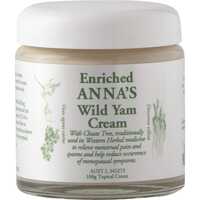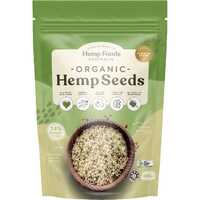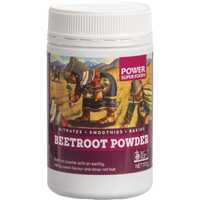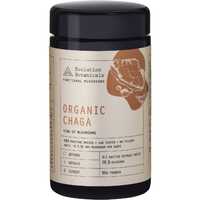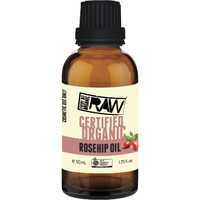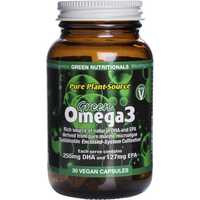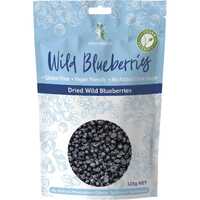The health food industry is truly global, with great ingredients sourced from every corner of planet Earth. From the comfort of your Australian home, you can enjoy fantastic products from South America, Scandinavia, and everywhere in between. This article will continue our global health food tour into the cold climates of Northern Europe. From the heart of Scandinavia in Denmark, Norway, and Sweden to the Nordic nations of Finland and Iceland, this stunning part of the world has a very inspirational diet.
From famous dishes to superfood ingredients, researching global food culture is a great way to learn more about the world. Let's take a long look at the Nordic diet and review some of the healthiest and most delicious superfoods from the far north.
What is The Nordic Diet?
Before we dive deep into the Nordic diet, we need to define this part of the world. The Nordic countries are a geographic region that includes parts of Northern Europe and the North Atlantic. It's also a cultural area, with many Nordic people sharing history, religion, and language. The Nordic region includes the nations of Denmark, Finland, Iceland, Norway, and Sweden. It also includes the autonomous territories of the Faroe Islands and Greenland and the lesser-known autonomous region of Åland.
While the terms "Nordic" and "Scandinavian" are often used interchangeably, the latter has a narrower focus. This subregion includes Denmark, Norway, and Sweden, although to complicate matters, the Scandinavian Peninsula excludes Denmark but includes part of Finland. We don't have to be too particular, however, with the Nordic diet enjoyed by people far and wide. It may be based on centuries of tradition, but it continues to inspire new flavour combinations and dishes each season.
This much-loved diet is defined by healthy fats from seafood, particular vegetables, and complex carbohydrates. Fermented foods also play a big role, as do mushrooms and small nutrient-rich berries. If you adopt a Nordic diet, you can expect plenty of root vegetables, lots of canola oil, and rye and oats instead of wheat. The Nordic diet focuses on whole foods that come from the local region, with this locally sourced attitude similar in many ways to the Mediterranean diet.
Like all traditional diets, local climate conditions have a huge influence on the availability of certain ingredients. Unlike the tropical climates of Central and South America, Northern Europe features a disparity between seasons and less natural abundance. This has led to an emphasis on seafood, which can be found all year round, and a focus on fermentation, which helps to preserve foods over the winter. There are relatively few dairy, poultry, and meat products in the Nordic diet and only a moderate amount of sugars and processed foods.
Superfoods From Northern Europe
The Nordic region is a massive geographic area that stretches across the Norwegian Sea. All Nordic nations have a coastline, which is where lots of food originates. Scandinavian nations also have beautiful forests, which produce vitamin-rich berries and mineral-dense mushrooms over the summer. Along with root vegetables and healthy omega-3 fats, this part of the world is also known for superfoods like blueberries, rosehip, and chaga mushrooms.
The following Nordic ingredients have become popular across the world:
Blueberries
Blueberries are a broad group of perennial flowering plants with blue or purple berries. These berries are widely distributed across the world, but they're often associated with the cold climates of Northern Europe and America. The traditional inhabitants of Canada have consumed wild blueberries for millennia, and the forests of Finland and Sweden have long been scoured for these wild native fruits. Wild Nordic blueberries are also called bilberries or whortleberries, and their scientific name is Vaccinium myrtillus.
These small coloured berries are closely related to common blueberries, and they share many of the same nutritional benefits. Whether you buy them at your local supermarket, an online health food store, or a Scandinavian delicatessen, the nutritional benefits of these berries are impossible to ignore. Blueberries feature lots of vitamins, including vitamin A, C, and K. They're also a fantastic source of antioxidants, which help prevent diseases by protecting you from cell damage.
Blueberries are known for their delicious taste, which is certainly not true of all superfoods. They're great with cereals, perfect in salads, and scrumptious in smoothies and shakes. The small size of these berries makes them easy to consume at any time of day, from early-morning fruit bowls to late-night desserts. If you're looking for an authentic Nordic dessert, blueberry pie is pretty hard to beat.
Rosehip
Rosehips are another Nordic delicacy with wide-ranging nutritional benefits. Just like blueberries, wild rosehips and their parent plant are native to many regions of the world. They can be found across Europe and Britain, on the coastlines of the United States, and even in northwest Africa. This small fruit is also called rose haw or rose hep, and it varies in colour from red and orange to dark purple and black.
Rosehips are famous for being extremely high in vitamin C. With 60 times the vitamin C of an orange, you can expect lots of immune-boosting goodness. Just like blueberries, rosehips are a fantastic food choice during long and bitterly cold Northern European winters. In addition to vitamins, these small fruits also have multiple antioxidants, such as carotenoids, flavonoids, and catechins. There are lots of ways to consume rosehips, with Europeans often making soups and jellies and teas widely available for quick and easy ingestion.
Beetroot
Beets and other root vegetables have always been popular in the far north. It's easier to grow root vegetables in colder climates, and they're also packed with lots of beneficial nutrients. Scandinavian beetroot has been enjoyed for centuries, with wild variants growing in all shapes, sizes, and colours. Beetroot is one of the least demanding crops in the world, and it produces a sweet and satisfying taste with an intense earthy undercurrent.
Beetroot is also very healthy, thanks in part to its bright natural colouring. Full of antioxidants and packed with minerals and trace elements, this vibrant vegetable has long been used for its medicinal qualities. When you consume beet, you can expect high levels of B vitamins, vitamin C, manganese, potassium, and iron. All these nutrients are highly valuable during a long Nordic winter. Like most root vegetables, beetroot is also incredibly versatile, so you can add it to soups, stews, or even salads.
Chaga mushrooms
As one of the great Nordic mushrooms, chaga grows naturally in the forests of Northern Europe. Native to cold climates across the northern hemisphere, these mushrooms can also be found in Russia and northern parts of the United States and Canada. Chaga mushrooms are grown on birch trees, and they've been consumed as a traditional medicine in Scandinavia for many centuries.
Chaga mushrooms contain a wide array of different nutrients, including vitamins, minerals, flavonoids, and enzymes. This mushroom superfood is also a potent antioxidant with powerful immune-boosting properties. This mushroom was traditionally used to regulate gut microbiota, and it's emerged as a leading gut health product in modern times. Chaga has a bitter taste when consumed alone, with this powerful mushroom often broken down as a powder or enjoyed as a tea.
Oily fish products
Fish and seafood products have always been central to the Nordic diet. From salmon and mackerel to herring, sardines, and anchovies, oily fish contain healthy heart-friendly fats and lots of beneficial vitamins and minerals. These products contain plenty of omega-3 fatty acids and lots of vitamin D, which is absolutely essential during dark Scandinavian winters. Healthy oily fish is available throughout the year in Northern Europe, with some traditional diets almost entirely dependent on food from the sea.
Mackerel is a big favourite, as it provides all the benefits of tuna without high levels of mercury. Sardines are another Nordic staple, with this seafood providing lots of vitamin B-12 and calcium. Anchovies are also consumed in large doses, and they feature healthy amounts of potassium, iron, phosphorus, and B vitamins. Canola oil is used instead of olive oil in the north, with this oil also containing healthy omega-3 fats.
Fermented foods
You can't talk about the Nordic diet without mentioning fermented foods. It gets very cold in the far north, and fresh food is simply not available for large parts of the year. While fish and seafood can be sourced during winter in many areas, the traditional diet was also dependent on the process of fermentation. A range of foods were fermented, including pickled vegetables, kefir, yogurt, and sourdough bread. All these foods contain probiotics that support gut health.
Fermented foods were born from necessity in cold climates, but they became a delicacy over time. Vegetables, fish, and dairy products change their flavour and texture once fermented, which can lead to entirely new dishes. For example, rakfisk is a Norwegian delicacy where trout is salted and left to ferment in water for up to a year. After this long period of fermentation, it can safely be eaten raw. Rakfisk is typically served with red onions, potatoes, sour cream, and a mustard-dill sauce.
If you're looking for a reliable source of healthy natural foods and supplements, we have the solution. At Healthy Being, we keep a fantastic variety of Nordic-inspired products in stock, including chaga powders, dried berries, and rosehip teas. We also have a great range of omega-3 oils and other gut-friendly foods, so you can enjoy the benefits of the Nordic diet on your own terms. So check out our website today and enjoy free shipping options across Australia and worldwide delivery!


 Certified Organic
Certified Organic Vegan Friendly
Vegan Friendly  Vegetarian
Vegetarian Organic Ingredients
Organic Ingredients Dairy Free
Dairy Free Gluten Free
Gluten Free Keto Friendly
Keto Friendly

















